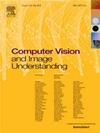SSL-Rehab:通过自我监督学习三维骨骼表征来评估物理康复练习
IF 4.3
3区 计算机科学
Q2 COMPUTER SCIENCE, ARTIFICIAL INTELLIGENCE
引用次数: 0
摘要
康复旨在帮助个人恢复或增强因受伤、疾病或疾病而丧失或受损的功能。物理康复运动的自动评估为患者监督提供了一种有价值的方法,补充或潜在地取代了传统的临床评估。然而,获取大规模带注释的数据集带来了挑战,这促使人们需要自监督学习和迁移学习。我们提出的方法通过低秩自适应(LoRA)集成了这两种策略,用于预训练和微调。具体来说,我们训练一个基础模型来学习鲁棒的3D骨架特征,通过三个阶段的过程适应不同水平的蒙面运动复杂性。在第一阶段,我们对关节子集应用高掩蔽比,使用基于变压器的架构和图嵌入层来捕获基本运动特征。在第二阶段,我们降低掩蔽比,扩展模型的能力,以学习更复杂的运动模式和关节之间的相互作用。最后,在第三阶段,我们进一步降低掩蔽比,使模型能够细化其对详细运动动力学的理解,优化其整体性能。在第二和第三阶段,结合LoRA层来提取适合每个掩蔽级别的独特特征,确保在不显着增加模型尺寸的情况下有效适应。对下游任务的微调表明,当使用不同的掩蔽运动水平时,模型表现更好。通过在公开可用的KIMORE和UI-PRMD数据集上进行的广泛实验,我们证明了我们的方法在准确评估康复练习的执行质量方面的有效性,在所有指标上都超过了最先进的性能。我们的项目页面可以在网上找到。本文章由计算机程序翻译,如有差异,请以英文原文为准。
SSL-Rehab: Assessment of physical rehabilitation exercises through self-supervised learning of 3D skeleton representations
Rehabilitation aims to assist individuals in recovering or enhancing functions that have been lost or impaired due to injury, illness, or disease. The automatic assessment of physical rehabilitation exercises offers a valuable method for patient supervision, complementing or potentially substituting traditional clinical evaluations. However, acquiring large-scale annotated datasets presents challenges, prompting the need for self-supervised learning and transfer learning in the rehabilitation domain. Our proposed approach integrates these two strategies through Low-Rank Adaptation (LoRA) for both pretraining and fine-tuning. Specifically, we train a foundation model to learn robust 3D skeleton features that adapt to varying levels of masked motion complexity through a three-stage process. In the first stage, we apply a high masking ratio to a subset of joints, using a transformer-based architecture with a graph embedding layer to capture fundamental motion features. In the second stage, we reduce the masking ratio and expand the model’s capacity to learn more intricate motion patterns and interactions between joints. Finally, in the third stage, we further lower the masking ratio to enable the model to refine its understanding of detailed motion dynamics, optimizing its overall performance. During the second and third stages, LoRA layers are incorporated to extract unique features tailored to each masking level, ensuring efficient adaptation without significantly increasing the model size. Fine-tuning for downstream tasks shows that the model performs better when different masked motion levels are utilized. Through extensive experiments conducted on the publicly available KIMORE and UI-PRMD datasets, we demonstrate the effectiveness of our approach in accurately evaluating the execution quality of rehabilitation exercises, surpassing state-of-the-art performance across all metrics. Our project page is available online.
求助全文
通过发布文献求助,成功后即可免费获取论文全文。
去求助
来源期刊

Computer Vision and Image Understanding
工程技术-工程:电子与电气
CiteScore
7.80
自引率
4.40%
发文量
112
审稿时长
79 days
期刊介绍:
The central focus of this journal is the computer analysis of pictorial information. Computer Vision and Image Understanding publishes papers covering all aspects of image analysis from the low-level, iconic processes of early vision to the high-level, symbolic processes of recognition and interpretation. A wide range of topics in the image understanding area is covered, including papers offering insights that differ from predominant views.
Research Areas Include:
• Theory
• Early vision
• Data structures and representations
• Shape
• Range
• Motion
• Matching and recognition
• Architecture and languages
• Vision systems
 求助内容:
求助内容: 应助结果提醒方式:
应助结果提醒方式:


